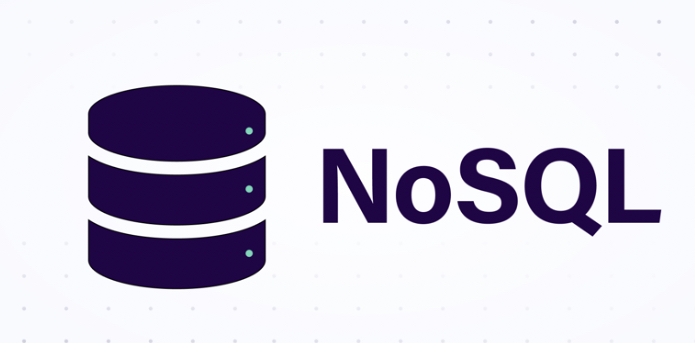NoSQL vs. SQL Performance: Uncovering Differences & Benefits
A striking disparity between the traditional relational model and the non-relational model lies in their fundamental designs. The relational model, epitomized by SQL databases, emphasizes the structuring of data into well-defined tables with relationships that ensure data integrity and consistency. This approach is particularly suitable for scenarios where precise relationships and transactional consistency are essential.
- Conversely, non-relational models are engineered with a distinct purpose: processing massive volumes of data in real-time with a primary focus on performance. This divergence in intent leads to a departure from the rigorous consistency requirements imposed by the ACID (Atomicity, Consistency, Isolation, Durability) principles commonly upheld by relational databases;
- In the realm of non-relational databases, the emphasis shifts towards accommodating the velocity and variety of data. The trade-off for this increased performance-oriented design is a relaxation of the stringent ACID constraints. This translates to scenarios where immediate and rapid data processing takes precedence over maintaining rigid consistency at all times.
In essence, the choice between relational and non-relational models hinges on the specific demands of the application. While relational databases excel in ensuring data accuracy and reliability, non-relational databases are well-suited for scenarios where high-speed processing and scalability are critical. Recognizing this balance between consistency and performance is vital when determining the most fitting database model for a given context.
Exploring the Functionality of SQL
When it comes to structured data with well-defined relationships, SQL databases excel. These databases offer a robust framework for managing data with intricate connections, making them particularly suitable for scenarios where data integrity and consistency are paramount. SQL databases exhibit a remarkable capability to manage relationships between variables and entities, ensuring that the data remains organized and meaningful.
- One of the key strengths of SQL databases lies in their scalability. These databases can be vertically scaled, allowing for the enhancement of server capacity through upgrades to CPU, RAM, or SSD resources. This vertical scaling approach enables organizations to accommodate growing data loads while maintaining optimal performance;
- Furthermore, SQL databases adhere to a rigidly structured schema. This structured schema entails organizing data into tables with specific columns or attributes and rows of records. While this approach demands meticulous organization and planning before data input, it ensures that the data remains coherent and consistent throughout its lifecycle.
SQL databases serve as powerful tools for managing structured data and complex relationships. Their capacity for vertical scalability, coupled with their structured schema, provides a solid foundation for efficient data management and retrieval, making them an essential asset for various industries and applications.
The Mechanics of NoSQL
In contrast to SQL, NoSQL systems accommodate a range of data structures. These systems feature a dynamic schema for unstructured data, reducing the need for meticulous pre-planning and organization. NoSQL databases permit the addition of new attributes and fields, and they support diverse syntax across different databases.
A Comparative Analysis of SQL and NoSQL
Comparatively, NoSQL databases shine in terms of speed, particularly in read and write operations, especially evident in key-value storage solutions like Berkeley DB. The realm of online transactions experiences significantly reduced waiting times due to this advantage. It’s important to note that while NoSQL databases exhibit varying performance across different operations, they generally surpass SQL databases in terms of speed.
Considerations for Choosing Between NoSQL and SQL
When deciding between NoSQL and SQL databases, several factors come into play. The nature of your data and the intended use case play a pivotal role. If your data involves complex relationships that demand strict consistency and data integrity, a relational SQL database might be the ideal choice. Industries like finance, where accuracy is paramount, often lean towards SQL databases.
Conversely, if your application requires handling vast amounts of unstructured or semi-structured data, such as social media feeds or sensor data, a NoSQL database’s flexibility and ability to handle high-speed operations might be more suitable. Start-ups and organizations dealing with rapid growth and evolving data structures are often drawn to NoSQL solutions, as they offer the agility required to adapt to changing data needs.
Hybrid Approaches for Optimal Performance
In some scenarios, a hybrid approach that combines both SQL and NoSQL databases can be advantageous. This allows organizations to leverage the strengths of both paradigms for optimal performance. For example, using an SQL database for critical transactional data while utilizing a NoSQL database for handling high-velocity, high-volume data can provide the best of both worlds. This approach ensures that data integrity is maintained while capitalizing on the speed and scalability of NoSQL systems.

The Evolving Landscape of Data Management
As technology continues to advance, the distinction between SQL and NoSQL databases is becoming more blurred. Many SQL databases now offer features that were once exclusive to NoSQL databases, such as support for semi-structured data and improved scalability options. Likewise, NoSQL databases are incorporating more ACID-compliant features to cater to applications that require some level of data consistency.
The choice between NoSQL and SQL databases should be driven by the specific needs of your application. Consider factors like data structure, consistency requirements, scalability, and performance demands. As the capabilities of both paradigms continue to evolve, organizations can expect even more sophisticated and hybrid solutions to emerge, catering to the diverse and ever-changing landscape of data management.
Redefining Data Management with RestApp
RestApp’s commitment to revolutionizing data management extends beyond its robust connectors and intuitive modeling editor. The platform’s holistic approach encompasses various features designed to streamline the entire data lifecycle.
Data Integration Made Seamless
One of RestApp’s standout features is its ability to facilitate seamless data integration across heterogeneous sources. The platform’s connectors enable data teams to bridge the gap between disparate databases, data warehouses, and applications. This integration capability eliminates data silos and empowers organizations to harness the full potential of their data assets. Whether it’s pulling in real-time data from social media platforms or syncing transactional data from business applications, RestApp’s connectors facilitate fluid data movement.
Empowering Data Exploration and Transformation
The heart of RestApp lies in its next-generation data modeling editor. This intuitive tool enables data professionals to visualize and shape their data with unprecedented ease. Data modeling is often a complex and time-consuming process, but RestApp simplifies it through its drag-and-drop interface, pre-built templates, and smart suggestions. This empowers users to transform raw data into meaningful insights without requiring an in-depth understanding of coding or complex data manipulation techniques.
Collaboration and Workflow Enhancements
RestApp recognizes that effective data management is a collaborative effort. To this end, the platform offers features that promote teamwork and streamline workflows. Teams can collaborate seamlessly within the platform, sharing data models, insights, and analysis. Version control ensures that changes are tracked, and users can work confidently knowing that previous iterations are preserved. These collaborative features foster a culture of data-driven decision-making across the organization.
Navigating Data Governance and Compliance
In an era of increasing data privacy regulations and compliance requirements, RestApp takes data governance seriously. The platform offers tools for managing access controls, data lineage, and audit trails. This not only ensures data security but also facilitates compliance with regulations such as GDPR and HIPAA. Data teams can confidently manage sensitive information while adhering to industry standards.
A Glimpse into the Future
As RestApp continues to evolve, it’s poised to become a cornerstone of modern data ecosystems. Its focus on simplifying data integration, modeling, and collaboration aligns perfectly with the growing demand for agile and efficient data management solutions. The platform’s adaptability and user-centric design ensure that it remains at the forefront of data innovation.
In Conclusion
At RestApp, a Data Activation Platform is being developed to empower modern data teams. The platform offers an extensive library of connectors to various databases, including MongoDB, data warehouses, and business applications. This rich array of connectors enables seamless integration and interaction between diverse data sources, fostering a holistic approach to data management.
The platform’s next-generation data modeling editor is a testament to RestApp’s dedication to user-centric design. Built with a focus on simplicity and user-friendliness, this editor empowers data teams to visualize, shape, and manipulate data effortlessly. The intuitive interface streamlines complex tasks, allowing users to create intricate data models without grappling with steep learning curves.
RestApp’s commitment to intuitive data management extends beyond the surface, permeating the entire user experience. As the digital landscape continues to evolve, RestApp stands at the forefront, equipping data teams with the tools they need to navigate the intricacies of modern data management. Through a combination of powerful connectors, an intuitive data modeling editor, and a user-centered ethos, RestApp paves the way for efficient, effective, and forward-looking data management practices.






Leave a Reply